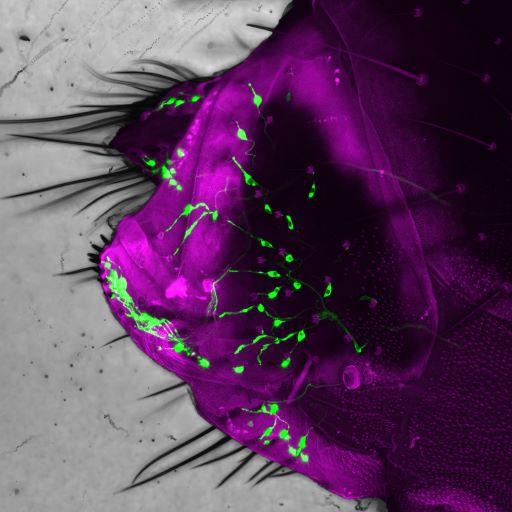Abstract:
Our days are filled with familiar routines. In the morning, you might brush your teeth, make eggy bread, and commute to work. Upon closer examination of these and other behaviours, a central theme emerges: complex behaviours are comprised of simpler, more elemental actions that are strung together into purposeful sequences. Importantly, to accommodate natural variability in the environment, these sequences need not be rigid and stereotyped but instead require a margin of flexibility as they progress from step to step. What are the neural substrates and mechanisms that impart flexibility in the progression of behavioural sequences? We used Drosophila egg-laying behaviour as a model system to address this question. We have characterized the elemental structure of egg-laying and observe that transitions between steps are variable in timing and direction (e.g., flies can revert to an earlier step). This variability is essential to achieving the ultimate goal – subterraneous egg deposition – across diverse environmental conditions. To understand the neural basis of this behavioural flexibility, we identified key interoceptive and exteroceptive sensory neurons that inform transitions from the final behavioural step, egg burrowing. We focused on a cluster of internal sensory neurons that track the egg's position as it enters the egg-laying appendage. We used optogenetics to reveal a behavioural-state-dependent mechanism that governs the timing and direction of burrowing transitions based on these neurons' activity. These data uncover the logic of a decision process at the juncture between steps in the sequence affording the behaviour an adaptive flexibility. Most broadly, these findings advance our understanding of how the nervous system assembles elemental component actions into complex sequences. This fundamental process forms the basis of nearly all goal-directed behaviour.

Biography:
Kevin received a B.S. in Bioengineering from UC Berkeley. Subsequently, he began his neuroscience research career at UCLA as a technician in the lab of Arthur Toga, studying the neural correlates of the BOLD signal. Kevin then pursued and completed his Ph.D. in Naoshige Uchida’s lab at Harvard University. His graduate work examined the relationship between sampling behaviour and neural coding in the olfactory system of behaving rats during odor discrimination. As a postdoc in the lab of Richard Axel at Columbia University, Kevin is studying egg-laying behaviour in Drosophila as a model system for sensory-motor integration and behavioural flexibility. During this time, Kevin was also a visiting scientist at Janelia Research Campus, collaborating with Barry Dickson to dissect the egg-laying pattern generating circuit.
